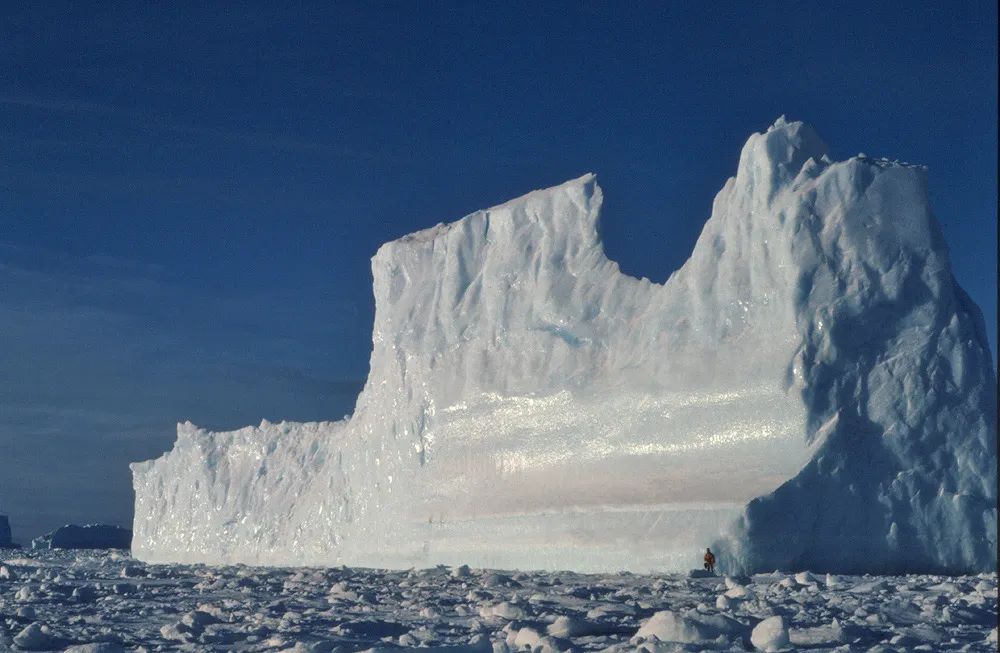Grounded Antarctica icebergs
Standing next to an iceberg such as this one can be quite a scary experience. In addition to being stuck in the sea ice, this particular berg has been grounded on the sea bed. It was probably blown towards shore by strong winds or a storm, and on a high tide. When the wind died down and the tide fell, the berg was left resting, stuck on the sea bed.
A result of this is that when the tide rises and falls the sea ice rises and falls with it but the iceberg doesn't. There are all kinds of creaking and groaning noises made by the sea ice as it is forced to rub up and down the uneven sides of the berg with the tide. To add to these unsettling sounds are an assortment of creaks, groans and bangs made by the iceberg above water as the sun heats up the surface.
The fear is that either a large lump of ice will come tumbling down or worse still, the iceberg becomes unstable and tips up to a new more stable position. This tipping up rarely happens in the winter, more commonly it takes place in warmer summer temperatures, but it is not unknown and if it happens can cause waves and ripples that break up the surface of the sea ice for miles around. Neither of these events are ones that you want to witness while standing on the sea ice surrounding the iceberg!
Previous
Next
Back to thumbnails
Photo credit - Paul Ward / coolantarctica.com

